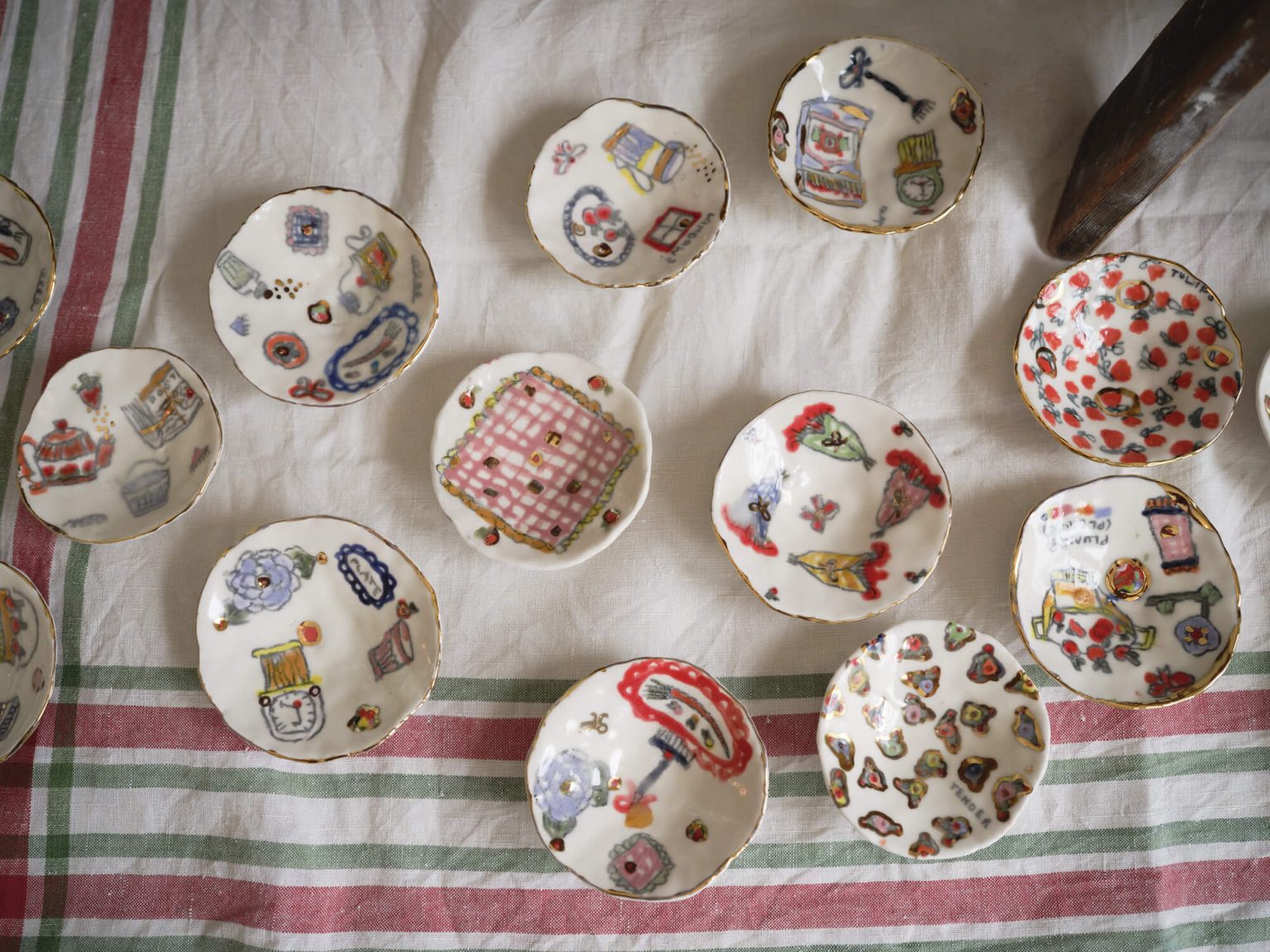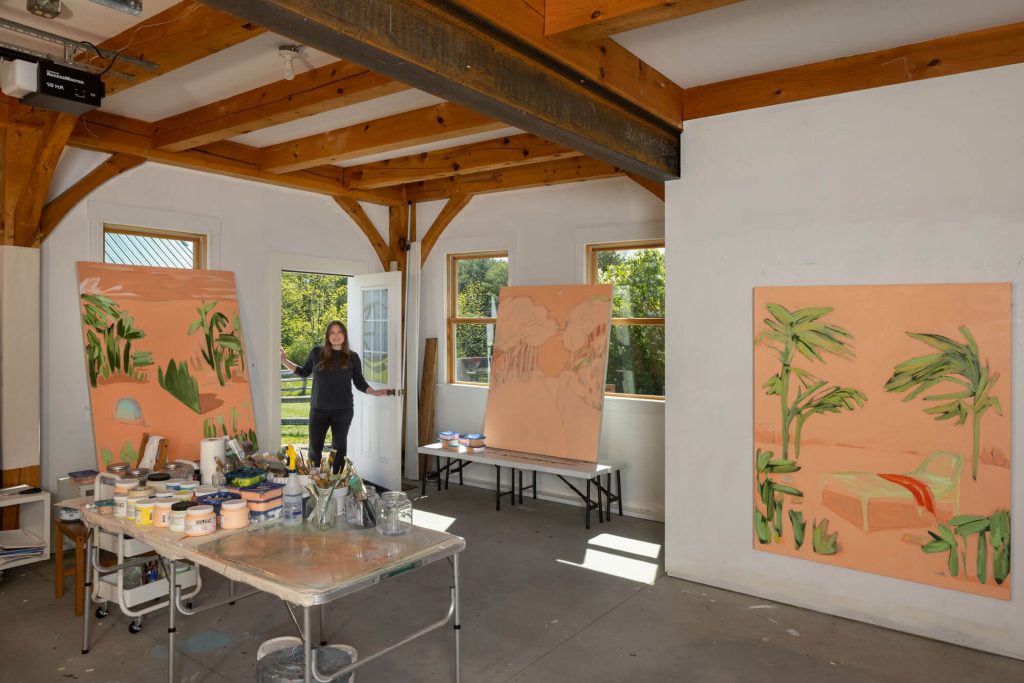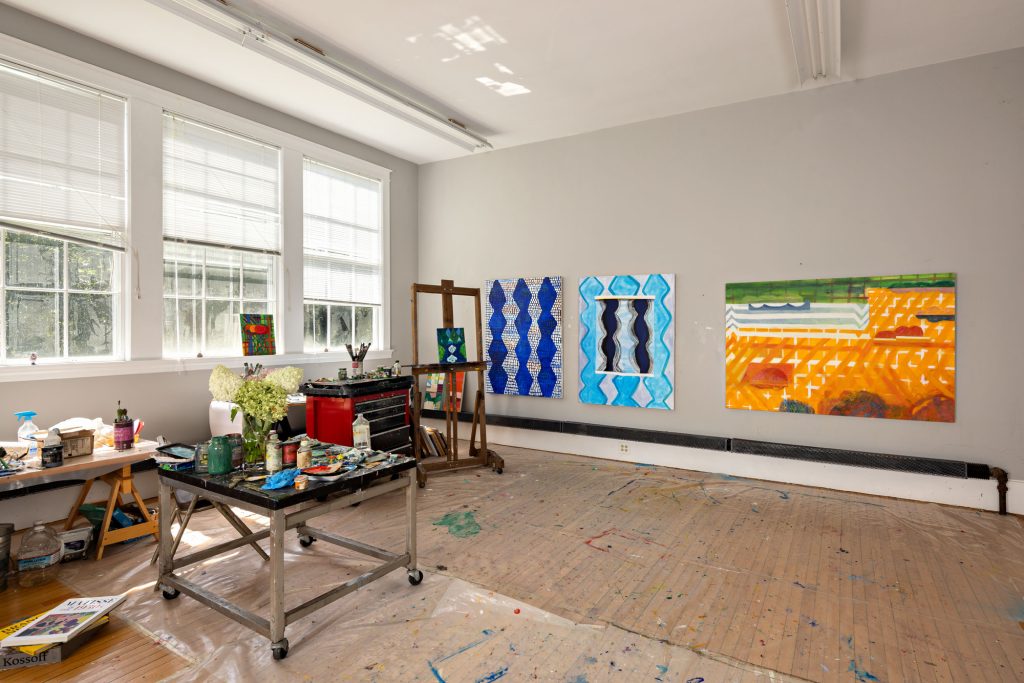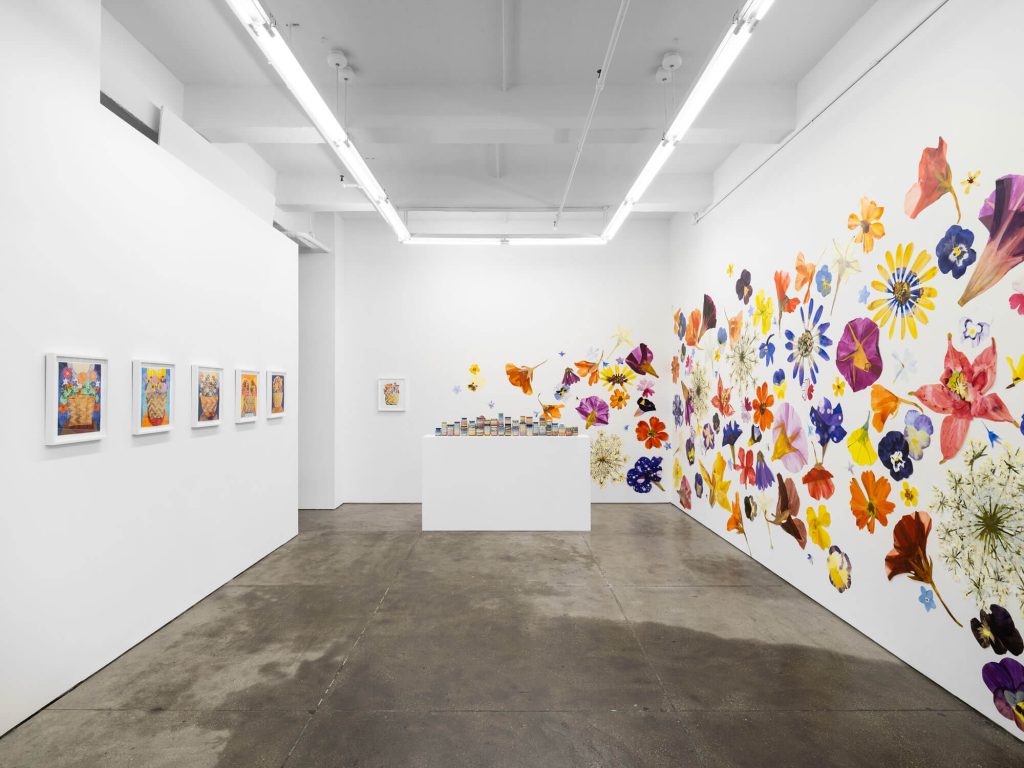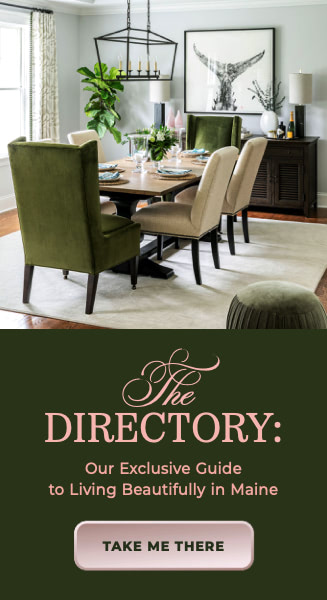“It’s always been ingrained into my head that everything begins at the kitchen table.”
Dominique Ostuni grew up in a restaurant family. Her mom owned an Italian restaurant in Syracuse, New York, and as a child, Dominique was set up in a booth with colored pencils, old menus and receipts to draw on, and a plate of spaghetti and meatballs while waiting for her mother to get off work. Underneath a mural of Italian women smashing grapes, surrounded by the smells of food and wine, Dominique drew. For her, everything begins at the booths of those restaurants, so perhaps it’s not a surprise that her style weds different mediums, bringing together painting, poetry, and pottery into what she calls utilitarian paintings—ceramics that people use in their kitchens and homes.
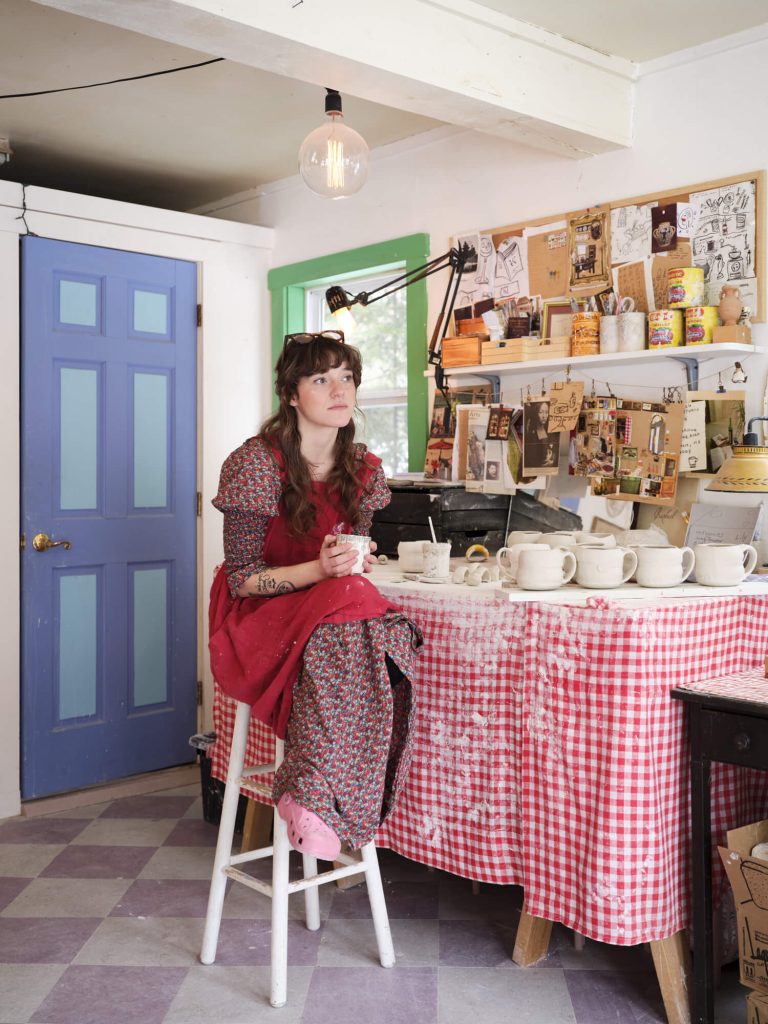
Dominique followed her high school sweetheart to Maine. She’d always considered herself a painter, but as a student at the Maine College of Art, she discovered ceramics and found that she could fold her many loves into pottery.
“I feel like I’ve always had a really hard time expressing myself with words,” said Dominique. “I finally figured out that ceramics is my own in-house language. It’s a complete reflection of myself. It’s like holding hands with somebody who uses my mug, I feel like I’m finally able to tell you who I am. It’s a direct testament of my human beingness.”
“To bring that into people’s kitchens,” she added, “the most intimate place in their entire homes, where arguments happen, where you’re able to make meals for the people you love, where I find myself crying once a week—it’s just so amazing. It’s always made the most sense.”
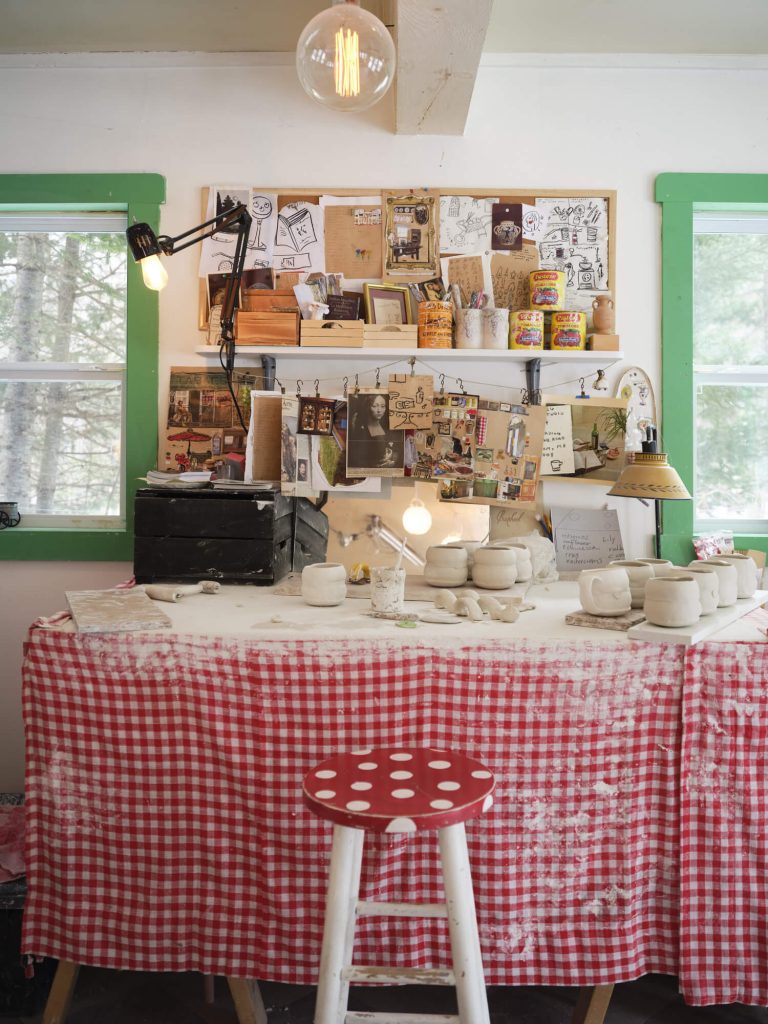
Dominique works out of a studio in Bowdoinham, a space she shares with the potter Sara Cox, an important influence and mentor. She strives to make work that is unabashedly honest. Each mug tells a different story, and she draws these narratives out with an underglaze pencil and paintings from her notebooks. In her free time, Dominique visits antique stores, and she’s been inspired to stitch the imagery, lettering, and feeling of vintage embroidery into her ceramics.
Most recently, she’s been crafting butter domes. During a visit to Morning Glory in Brunswick, she noticed that many of their butters did not come in stick form, and she was inspired. These domes have been an ideal canvas for her work. She drenches each in 22-karat gold luster to create an object that is luscious, decadent, and utilitarian—intended for the kitchen.
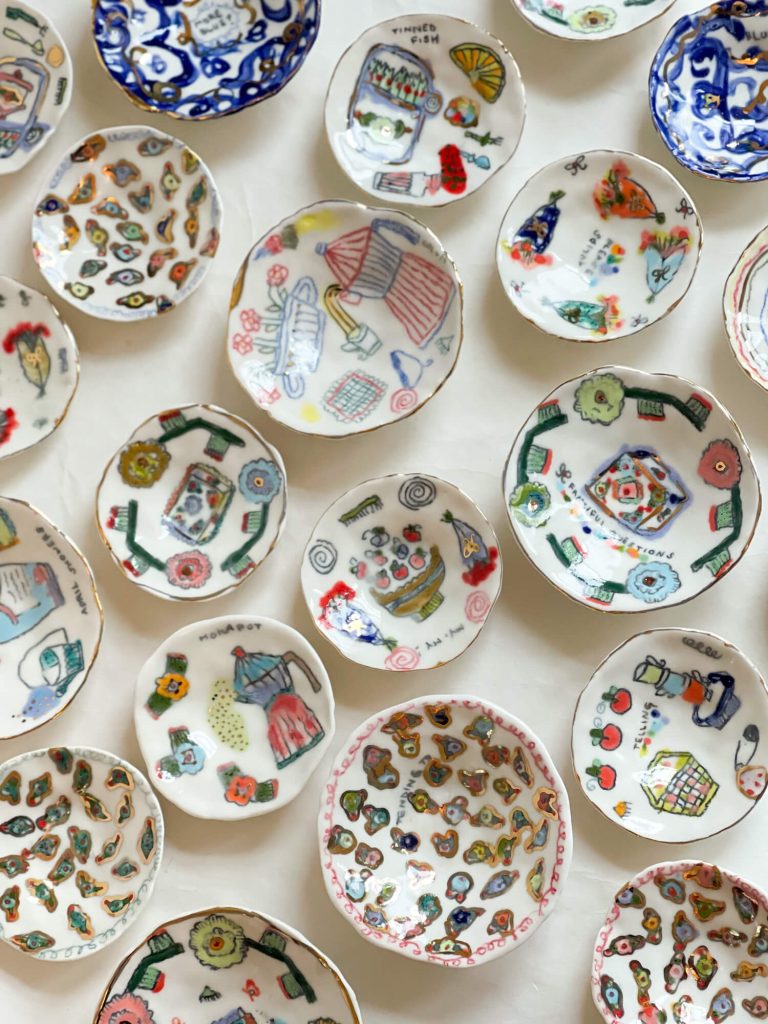
As for Dominique’s ideal kitchen, it resembles hers today.
“The cabinets are so full that they’re always open. There are breadcrumbs all over the kitchen counters, and it’s full of ceramics,” she said. “I don’t keep any of my work. I consistently circulate money that I make from my work and pour it back into the ceramics community. In my ideal kitchen, I collect work from every single potter who has inspired me and hang them up right over my kitchen sink.”
“That is my ideal kitchen. It’s always kind of a mess. And it’s full of ceramics.”
